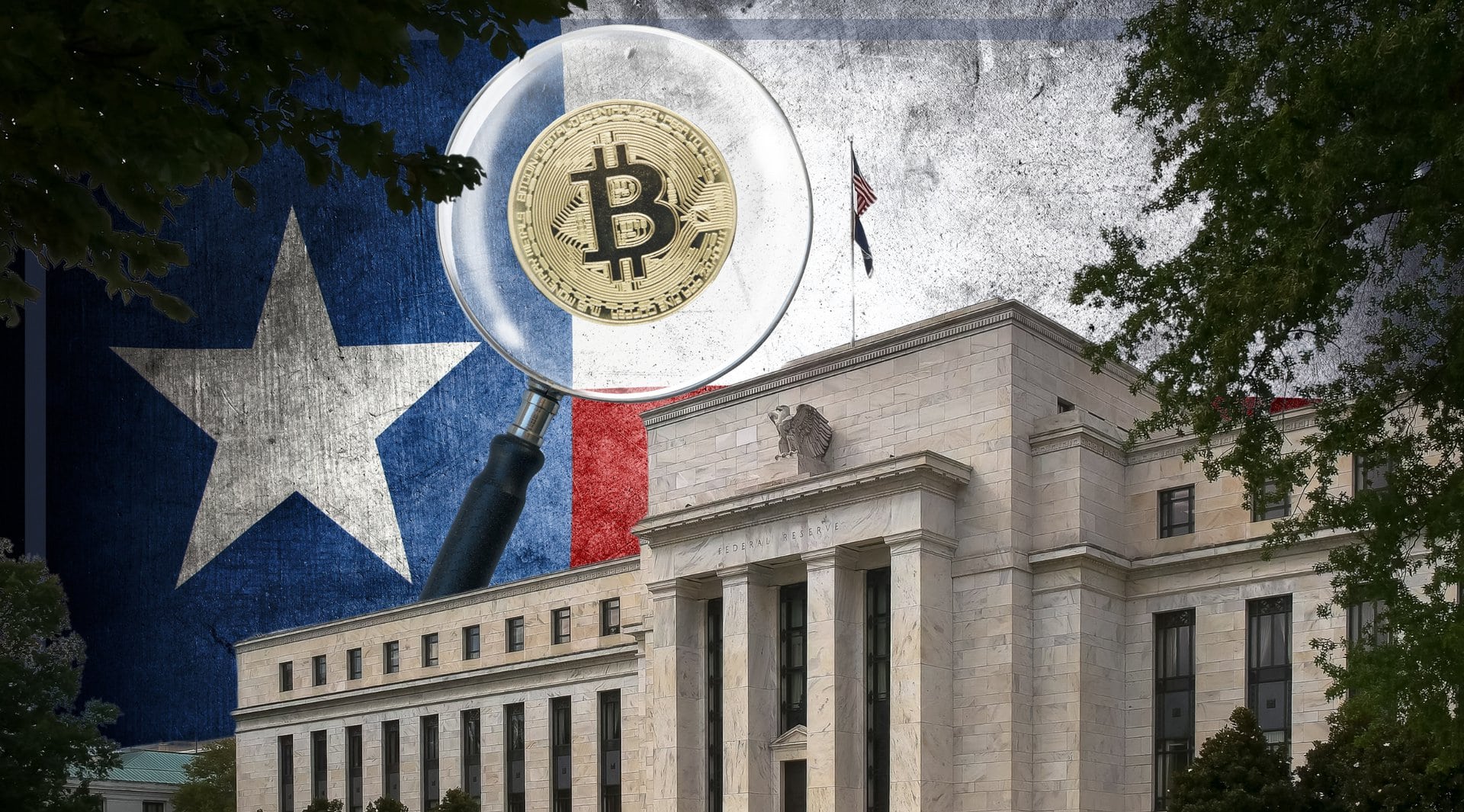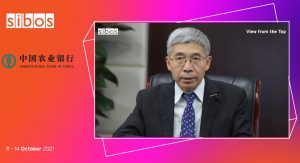AI firms and data brokers are in a scramble for land and power in Texas and beyond. Government officials and energy providers are being wined and dined by tech executives, discussing the details in back rooms in cities like Austin, Abu Dhabi, and Nairobi.
Don’t Mess with Texas’ Grid
The mad dash to build new data centers and secure massive contracts with power companies stems from the unprecedented amount of energy needed to power AI and Big Tech. Not long ago, due to gains in efficiency, the energy consumed by data centers year-by-year had nearly flatlined.
Between 2015 and 2019, while the amount of data processed nearly tripled, the energy consumed by data centers stayed pretty much the same. That began to drastically change around 2020 when the AI boom began to hit the mainstream.
A query presented to an AI platform such as ChatGPT requires far more processing power than if the same query were presented to Google’s traditional search engine, so much so that it consumes ten to thirty times the energy a traditional search engine query does.
Similar comparisons can be made for competing AI platforms. As a result of this energy-hungry technology, big tech is looking high and low for cheap electricity.
From 2023 to 2024, the inventory of North American data centers increased by 24.4%. Northern Virginia, the largest data center market in the world, saw the largest increase in new supply. However, the data centers in Virginia, like many other regions in the U.S. and the world, are near capacity, with availability running at .2%.
The location of new data centers is dependent on a variety of factors: available land, access to electricity and water, and a favorable pro-business political climate. Since Texas is already a haven for bitcoin miners, some of them publicly traded, the state is a natural fit.
Wild Wild West of Data Centers
Statewide, Texas has seen a surge of new data centers, up to 329 now, which makes Texas second only to Virginia in the nation.
However, for the notoriously libertarian state government of Texas, the influx of data centers has elicited a strong pushback because the electric grid has already seen catastrophic failures in the recent past.
While a single data center can bring in millions of dollars of tax revenue, it can also consume the electricity of a small city. In the continental United States, Texas is the only state to operate its own completely separate power grid, a system that is not interconnected like the rest of the regional grids in the U.S.
👀A peek inside our @IBMcloud data center in Dallas, Texas. Learn more about IBM's network of nearly 60 data centers around the world: https://t.co/cglBHvzjIf pic.twitter.com/eWG6EUeQzB
— IBM (@IBM) April 5, 2018
After winter storms knocked out power for millions in 2021 and left 246 people dead, the Electric Reliability Council of Texas (ERCOT), the state’s grid operator, was roundly criticized.
While Texas is the United States’ largest energy producer, in crude, natural gas, and electricity, in 2023 ERCOT issued eleven requests for statewide energy conservation because of stress placed on the grid. These requests were not specifically due to stresses placed on the system due to the energy needs of data centers, but due to preexisting capacity issues within the grid.
The data centers further exacerbate these challenges. Due to this reality, politicians have begun publicly discussing potential limits and restraints placed on data centers and crypto miners.
In the words of Lieutenant Governor Dan Patrick: “We want data centers, but it can’t be the Wild Wild West of data centers and crypto miners crashing our grid and turning the lights off.”
Meanwhile, bitcoin mining operations have spread across the state. Every bit as energy-hungry as data centers, crypto miners have sold themselves to legislators and power companies with an important feature: they can power off during potential brown-out periods so that the grid isn’t overloaded.
[ Riot | ERCOT Grid News ]
— GigaChad (@chadeverett) May 14, 2022
Team @RiotBlockchain's 700MW #Bitcoin Mining Facility will be supporting the #ERCOT grid over the coming days with 3000MW offline. Bitcoin Miners bring stability to the citizens of Texas by acting as Virtual Power Plants. #Texas #News #Community pic.twitter.com/A1frY7zs3e
Miners have been making a profit by reducing their power usage and selling it back to local utilities. In August of 2023, Riot Blockchain, which operates the biggest crypto “mine” in the world, made $32 million from not mining, as opposed to $8.6 from selling crypto.
While Governor Greg Abbot welcomed bitcoin miners to the state and saw their energy-hungry operations as a useful method to encourage power companies to make more electricity, especially after the devastating effects of the winter storm in 2021, it hasn’t played out that way. And Texas residents have become more critical of the role of the industry in Texas power woes, which are only projected to get worse.
According to Goldman Sachs, by 2030 data centers will use 8% of available electricity in the United States, up from 3% in 2022. It is estimated that “around $50 billion in new generation capacity” is needed to support data centers alone.
Moreover, power demand is expected to grow by up to 15% per year through 2029, and utility companies are already struggling to keep up.
That Southern Spirit
Due to these challenges, there have been increasing calls for the Texas power grid to become interconnected with other regional grids for the first time. In February of 2024, Texas lawmakers introduced a bill to connect Texas’ grid with the rest of the country, the Connect the Grid Act.
However, the passing of such legislation would bring ERCOT under federal oversight, which many residents and policymakers view as a sort of death for the Lone Star State. As a result, the legislation stalled, and ERCOT has suggested that data centers should build their own power plants.
In early October 2024, the Biden Administration announced that $1.5 billion would be spent on four different power projects across the country, as part of the Bipartisan Infrastructure Law.
One of the four projects sets aside $360 million to build a high-voltage line that would connect Texas’ grid with power markets in the Southeast. The project, called Southern Spirit, would in theory help alleviate power issues, making the Texas grid more resilient against cascading outages.
Unlike the Connect the Grid Act proposed earlier in the year, Southern Spirit will not bring federal control of the Texas Grid.
ERCOT CEO Pablo Vegas said in June testimony for the Texas Senate Committee on Business and Commerce, that data centers could be responsible for almost half of the added growth projected for Texas by 2030.
That would be great for the GDP and tax base of Texas, but it could lead to instability in the electric grid if the companies don’t work closely with ERCOT to manage the growth. If the grid is unstable and collapses, businesses all over the state could stand to lose profits when the power goes out, further eroding the good will of voters on these fast-growing industrial sectors.
Knowing this, Texas lawmakers and grid operators are exploring various options, including but not limited to expanding renewable power sources and demand forecasting. The most obvious solution, interconnection with other regional grids, seems to be out of favor due to fears of federal overreach.
If not Texas, then where?
If Texas doesn’t host this data and AI revolution, the companies driving the surge will go elsewhere, and the options under consideration might surprise you.
Microsoft and OpenAI are courting governments, including in China and the the United Arab Emirates (UAE).
The UAE in particular has long sought to position itself as a leader in the global race for AI. The domestic Emirati company, G42, has obtained U.S. government approval for NVidia computer chips and Microsoft has invested $1.5 billion in the company.

Brad Smith, Vice Chair and President of Microsoft; Sheikh Tahnoon bin Zayed Al Nahyan, Chairman of G42; Peng Xiao, Group CEO of G42.
G42 has ties to China and the deal between Microsoft and G42 was greatly scrutinized by the U.S. government because American policymakers were concerned over the potential national security risks of Chinese tech components.
G42 denies any connections to China. In January, the company stated, “G42 operates within strict compliance and ethical boundaries, adhering to all applicable laws and regulations. Any innuendo suggesting otherwise is unfounded and irresponsible.”
The U.S. aims to counter Chinese influence in the tech sector, so making deals with companies like G42 and getting Microsoft and OpenAI to build data centers in Texas are crucial tasks in the geopolitical contest.
Faced with all these difficult choices, it looks as if the big data and AI players will likely choose “all of the above“, building in Texas, the UAE, East Africa, and even in Pennsylvania’s notorious Three Mile Island.
With 7,000 data centers built or in development globally, the electricity demand will grow at a rate that “hasn’t been seen in a generation,” according to Goldman Sachs. It remains to be seen how governments and grid operators will deal with it. For once, economic growth may take a backseat to voters’ demands.
Author: Laird Dilorenzo
#Crypto #Blockchain #DigitalAssets #DeFi
Laird Dilorenzo is a hatchet thrower and wordsmith.
The editorial team at #DisruptionBanking has taken all precautions to ensure that no persons or organizations have been adversely affected or offered any sort of financial advice in this article. This article is most definitely not financial advice.















